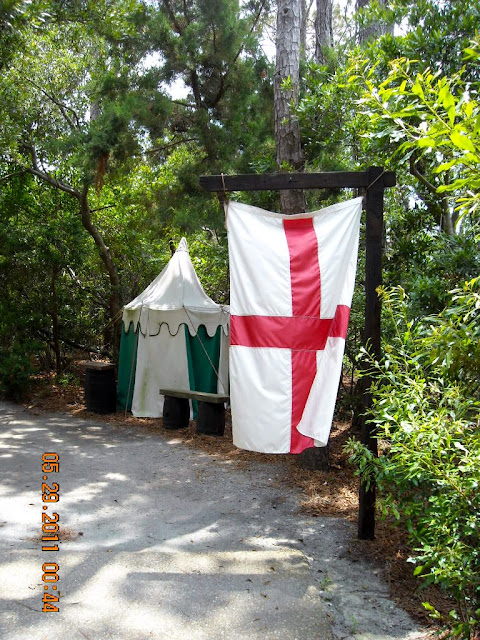 |
| Our day trip on this day was to Roanoke Island. |
 |
| Roanoke Island is just west of Nags Head, Outer Banks. We took a bridge to get there. |
 |
| Joe chose to go to Festival Park on Roanoke Island. |
 |
| It cost $8 per adult. It was Sunday, and they told us, on Sunday it is half price, so we paid $4 each instead. We were blessed! |
 |
| The parking lot was very bare. We could see why Sundays were half price. |
 |
| I just had to stop and take some pictures of the beautiful Hydrangea's that were planted in the park. |
 |
| I had a few Hydrangea bushes in our old yard, but they didn't do well, because they were in our side yard, which consisted of clay. Terrible soil to grow anything. |
 |
| Festival Park is a history class of Roanoke Island. We first watch a movie of the American Indians, the Algonquian, that were in this area. The park is set as the Indian culture was, in 15 85 |
 |
| This would be the Tribal chief's home. |
 |
| The female Indians would work in these shelters weaving baskets, or making rope, or other household duties. |
 |
| They had a dance circle of carved tree poles, for dance and celebrations. |
 |
| A small home was open, so you could see the fame work of their homes. |
 |
| In 1585, a voyage to Roanoke Island, with English settlers came on a ship similar to the Elizabeth II Sailing Ship. |
 |
| You can board the ship and talk to a 16 century sailor. |
 |
| The ship took 110 days from England to Roanoke Island,NC. |
 |
| All settlers lived below the main deck for those 110 days. |
 |
| A look out one of the windows in the lower deck. There would be up to 50 people eating and sleeping on the lower deck. |
 |
| The Indians made their canoes by dropping a tree, then starting it on fire to soften the wood. |
 |
| A path takes you to the settlement village in the new world of the settlers. |
 |
| A blacksmith was in his shop. He was making nails for all the new home that were going to be built for the settlers. |
 |
| After a little work, he made me a nail. |
 |
| My nail from the blacksmith. ( Sorry the picture is blurred, but you get the idea). |
 |
| The new world camp. |
 |
| A tent for someone of upper class. |
 |
| They had some pretty bushes around, so I couldn't resist just two photo's of them. |
 |
| And if you find yourself on a deserted island , you can use a stick with a shell tied to it as your hoe. |
































